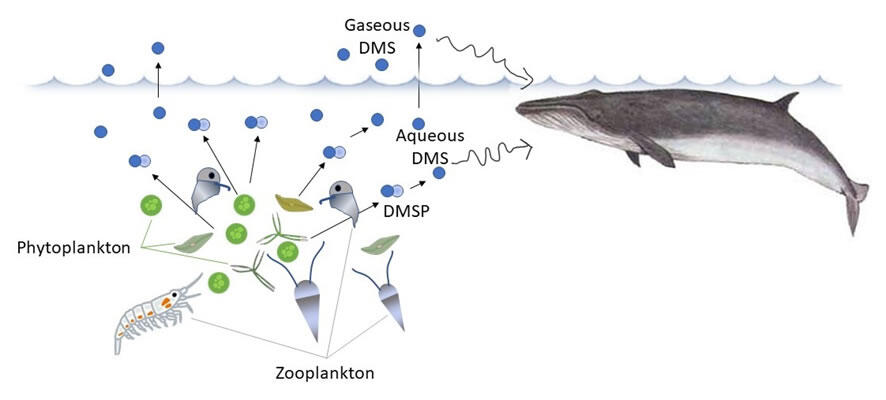The research group led by Professor Kei Toda, Faculty of Advanced Science and Technology, Kumamoto University has collaborated with a research group including Woods Hole Oceanographic Institution, Stony Brook University and the National Oceanic and Atmospheric Administration (NOAA) and has shown that following a concentration gradient of dimethylsulfide (DMS), a gas that produces "the smell of the sea" in ocean air and seawater can lead whales to zones dense in krill and other zooplankton.

Zooplankton such as krill are a major food source for whales. In order to maintain their enormous bodies, they must find these tiny animals very efficiently, but few details are known about how they do this.
To study their relationship, the research group simultaneously measured DMS and whales'favored zooplankton, over a series of transects across the ocean surface, in the seas off Cape Cod (Massachusetts, USA).
The study found distributional concentration of DMS or DMSP (dimethylsulfoniopropionate--a water-soluble chemical compound resistant to marine osmotic pressure) even in localized patches of ocean. It also discovered a positive correlation between the concentration of DMS in the ocean and air and zooplankton density.
As a result of the hunting activity of zooplankton, phytoplankton release a chemical substance into the sea, likely leading to higher concentrations in their surroundings. Therefore, a computer simulation based on the actual measurement data found that if a whale detects concentrations of DMS and swims in the direction of higher DMS concentration, it will eventually encounter a rich food source (zooplankton).
Toda states, "We will continue to track the behavior of whales to further clarify the relationship between chemical substances and whales' hunting behavior. Since last February we have been going out on Zodiac boats to track whales in the Southern Ocean near Antarctica using measurements from a smaller analyzer and GPS. We have also been improving our analysis technique and revising our study methodology. In future, we would like to expand the study into the relationship between the behavior not just whales but of other marine animals like seabirds and penguins and chemical attractants."
This article has been translated by JST with permission from The Science News Ltd.(https://sci-news.co.jp/). Unauthorized reproduction of the article and photographs is prohibited.




